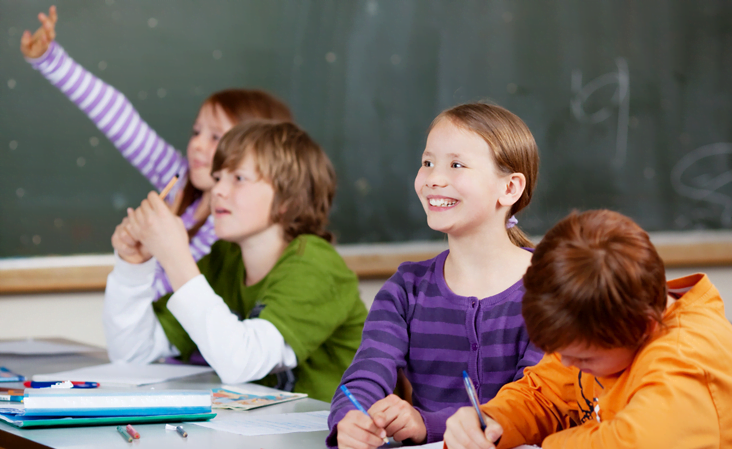Total participation techniques (TPT) are strategies used by educators to actively engage all students in the learning process. These techniques are designed to create a classroom environment where every student is actively involved in the learning process and is able to share their thoughts and ideas. TPT can be used in any subject area and at any grade level, and they are particularly effective in classrooms with diverse student populations.
Total Participation Techniques
One popular TPT is called “hands-up, hands-down.” This technique involves asking a question and having students raise their hands to indicate that they have an answer. The teacher then calls on a variety of students to share their answers, ensuring that every student has a chance to participate. This technique not only allows students to share their knowledge and understanding, but it also helps to create a sense of community and belonging in the classroom.
Another TPT is “think-pair-share.” This technique involves giving students time to think about a question or problem on their own, then pair with a partner to discuss their thoughts, and finally share their ideas with the whole class. This technique allows students to process information in their own way and engage in deeper thinking. It also allows students to learn from each other and to practice communication skills.
“Round-robin” is another technique that allows every student to participate. This technique involves having students take turns sharing their thoughts on a topic or answering a question. This technique is particularly effective in small groups, where it is easy to keep track of who has spoken.
“Choral responding” is a technique in which the teacher says a statement or asks a question, and the whole class responds together in unison. This technique is effective in building a sense of community in the classroom and in helping students to internalize new information.
Total Participation Techniques List
Total participation techniques are a set of strategies for engaging all students in classroom discussions and activities. Some examples include:
- Think-pair-share
- Round-robin
- Three-step interview
- Numbered heads together
- Quick writes
- Gallery walk
- Chalk talk
- Popcorn reading
- Inside-outside circle
- Muddiest point
It’s important to note that these are not the only TPTs available, and different teachers may use different variations of the same technique. Additionally, the best TPT to use will depend on the specific learning objectives and classroom context.
Think-pair-share
This technique involves students thinking individually about a question or prompt, then discussing their thoughts with a partner, and finally sharing their ideas with the larger group. This allows for individual processing time, peer discussion, and whole-class sharing.
Round-robin
In this technique, students take turns sharing their ideas with the class while other students listen actively. This allows for participation from all students and promotes active listening.
Three-step interview
This technique involves students interviewing their classmates in three steps: asking questions, paraphrasing the answers, and sharing their own thoughts. This promotes active listening and encourages deeper understanding of the classmates’ perspectives.
Numbered heads together
In this technique, students are divided into small groups and assigned a number. The teacher poses a question and calls out a number, and the students with that number must come up with a response. This ensures that every student has an opportunity to participate.
Quick writes
This technique involves giving students a prompt or question and having them write a response in a short amount of time. This allows students to quickly process and respond to new information.
Gallery walk
This technique involves students walking around the room to view and discuss different stations or posters. This allows for movement and active engagement with the material.
Chalk talk
This technique involves having students write or draw their responses to a prompt or question on a chalkboard or whiteboard. This allows for visual representation of ideas and encourages active participation.
Popcorn reading
This technique involves having students take turns reading a text aloud, with each student picking up where the previous one left off. This allows for active participation and engagement with the text.
Inside-outside circle
This technique involves students sitting in two circles, an inner and an outer circle, facing each other. The inner circle shares their thoughts, and the outer circle listens and responds. The circles then rotate, allowing for active listening and participation from all students.
Muddiest point
This technique involves having students identify the point of a lesson or activity that they found most confusing. This allows for clarification and further explanation, and also helps the teacher understand which concepts need to be reinforced.
In conclusion, total participation techniques are strategies used by educators to actively engage all students in the learning process. These techniques can be used in any subject area and at any grade level, and they are particularly effective in classrooms with diverse student populations. The techniques include “hands-up, hands-down,” “think-pair-share,” “round-robin,” and “choral responding.”
These techniques not only allow students to share their knowledge and understanding, but they also help to create a sense of community and belonging in the classroom, allowing students to learn from each other and to practice communication skills. It’s also important to note that TPT is not a one-size-fits-all approach, and it’s essential to use a variety of techniques to suit different students’ needs and learning styles. Incorporating TPT into the classroom can not only increase student engagement but also help to create a more inclusive and equitable learning environment for all students.

